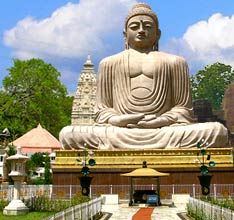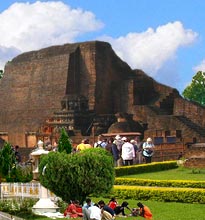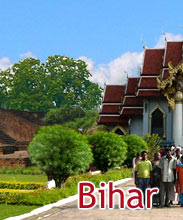The architectural beauty of Barabar Caves situated in the Barabar Hills is magnificent. These caves are located at a distance of around 25 km from Gaya. Barabar caves were carved during the first phase of development of Buddhism in the second century BC. These rock cut caves are deep and finely cut and have fine glassy and shining polish inside. Buddhist literature reveals that these caves were meant for Ajivika Buddhists.
Barabar caves are divided in three types and one of them is Nagarjuna caves. Other two are Hut caves and caves of Pandavas. Nagarjuna caves situated on Nagarjuna hill are two in number; Sudama and Chaupar. According to historical evidence, Nagarjuna hill caves were built during the era of Ashoka’s grandson. Other cave called Lomas Rishi cave is magnificently carved and has a rectangular chamber and polished in bright shining color. These caves were meant for ascetic spiritual Buddhist monks who were truth seekers and wanted isolation and seclusion.
Barabar caves have been cut up so sharp that they give illusion of laser cutting of modern days. The beauty of adorning is so effective that from inside these caves give the semblance of wooden crafting. These caves are important from the point of view of history writing of Buddhism. Many Jatak stories have been portrayed on the walls of these caves, which are relevant to understand the development of Buddhism in different phases.
Barabar caves have magnanimous arches which are few in contemporary history. Two other caves namely Karan Choper is a single chambered structure with a vaulted roof and small gate. The arches of Sudama cave are of bow shape and give great ambience. Halls were made in circular shape and polish from inside is major attraction of the cave. There are two chambers inside the Sudama cave and highly sophisticated polishing done on the walls of the cave is appreciable.
The Barabar caves were designed basically in the manner that they open from one side while closed from three sides. Most of them are in the shape of a cottage or hut and polished from inside. Smooth interiors of these caves and Jatak tales on the walls are attractive and informative. These caves are easily accessible and you can drop at Gaya railway station and from there you can board a bus or hire a taxi.










